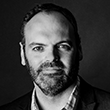There were some genuinely surprising moments at the Spark the Change conference yesterday. Some organisations such as W.L.Gore have creativity baked in. Others who were on the platform such as GCHQ have been deploying some quite surprising approaches to organisational creativity. They randomly selected 100 employees and gave them £10,000 to spend on a crowd-sourced platform to improve the business. It had very positive results (we’ll have to take their word for that as naturally the projects were largely classified!)
In a conference such as this, there is always a lot of talk about revolutionary trends, corporate extinctions, accelerating disruption and such like. And the pace of technological development in data aggregation, robotics, green tech, life sciences, and AI are all certainly both arresting and bracing. There is little doubt that enormous change is coming in energy, financial, retail and labour markets. We knew this. In the middle of all this, we find the quivering jelly of today’s organisations and institutions bewildered by talk of revolution and terrified by the prospect of extinction.
Becoming W.L.Gore or Pixar or Buurtzoorg or Zappos is not generally possible. But before we despair I wonder if the RSA’s worldview, the Power to Create, might provide some pointers or at least enable us to ask some of the right questions?
In a recent Harvard Business Review essay, Jeremy Heimans and Henry Timms (who is an impressive and active RSA Fellow), mapped out notions of new and old power. There are two main laudable aspects to their analysis: its clarity and its deft swerve around either-or-ism. You know the drill. Old power is hierarchical, specialised, closed, managerial, secretive and demands absolute commitment. New power is collaborative, transparent, networked in its governance, informal and more about affiliation than deep membership. What Heimans and Timms do is see new power and old power as more of spectrum with overlap within most organisations. It sits quite nicely with the cultural theory that we often deploy at the RSA which seeks to understand configurations of hierarchical, lateral and individual sources of power and how, in context, they might be most effectively deployed.
So it doesn’t end up as being about revolution or extinction but more about getting the appropriate balance of power to best meet internal and external drivers of change. Yes, some will fall by the wayside and, indeed whole industries and systems of governance, may radically change. Others will adapt to combine new and old power in innovative ways. However, organisations like societies are made up of people. At the risk of banality, that creates demands and challenges of a particular kind – it makes both organisations and institutions dynamic evolutionary forms. The Power to Create survey that was used in the New Digital Learning Age report provides one frame for how we might enquire within our organisational structures as to what a viable strategy of change in pursuit of greater creativity and adaptability might look like.
That survey identified three predominant working-age (in the main) groups:
- The ‘confident creators’ who are adept at developing their knowledge, creativity and social capital. 11 per cent of the population.
- The ‘held back’ are ambitious but feel that they need more support, a greater level of learning and more confidence to make their hopes a reality. 20 per cent of the population.
- The ‘safety firsters’. This group define themselves as not so creatively minded (at least when compared to the other two groups) and just want to get on with things. 30 per cent of the population.
Now, it’s easy to imagine the ‘confident creators’ thriving and feeling comfortable with disruptive and revolutionary change. But what of the ‘held back’ and the ‘safety firsters’? I should say that this is not to advocate the classic old power mistake of ‘sorting’ people into creative boxes. It is just a lens through which to understand the different ranges of needs. Here are a few questions on creativity and change:

If a firm or any other organisation for that matter wants to move further along the new power and creativity axis it has to understand the needs of its workforce (I’m assuming that just ditching your current workforce is not a strategy that any sane organisation is likely to contemplate). Confident creators are likely to be only a small component of your organisation. So what is needed is an array of support of a developmental, financial (eg access to budgets), and social nature. If these are in place then you may find that ‘held back’ come on the journey with you. In fact, in the GCHQ case study we heard the case of someone who had a creative improvement idea, had it crowd-funded, and whose confidence within the organisation was increased as a result.
We know from our work with a wide array of organisations in the public, private and not-for-profit sectors that change is hard. But understanding people might help with any process of change that rebalances new and old power. This doesn’t mean that there won’t be organisational ‘revolutions’ or even ‘extinctions’. There will. But for most, it will be a messy adaptation.
The full presentation is below:

Be the first to write a comment
Comments
Please login to post a comment or reply
Don't have an account? Click here to register.